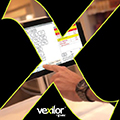Blog
4 ways restaurants can add 'flexibility, versatility' to customer experience
Most restaurants know they need to be more flexible and offer customers versatility, but what does that mean exactly?

January 25, 2019 by Cherryh Cansler — Editor, FastCasual.com
Editor's note: FastCasual interviewed executives from a variety of tech vendors to reveal some of 2019's most promising tech trends. Part 1 of this series featured executives from Paytronix and CoInspect. Part 2 discussed customers relying more on near-me and voice searches to help them decide where to eat. Part 3 focused on how the rise of third-party delivery and the tight labor market were forcing restaurants to evolve their POS systems.
Although customers have always called the shots in the eyes of most brand leaders, they're making even greater demands when it comes to placing and receiving orders on their own terms. And to meet those increasingly demanding expectations, restaurant brands require two things: flexibility and versatility, said Graham Campbell, COO, Givex, a cloud-based operations management solution designed to streamline business efficiencies and generate valuable and actionable customer data.
"With how the industry continues to rapidly change, it will be important for (brands) to continue keeping an eye on new trends, as well as continue taking a close look at what their audience is after," said Campbell, who admitted that anyone can say, "Be more flexible; offer your customers versatility," but what does that mean?
Campbell listed four strategies that restaurant brands can embrace to prove to customers they are both flexible and versatile when it comes to meeting their needs. They include:
- Integrating systems to create more efficiencies.
- Providing customers multiple options in everything from payment to consumption.
- Utilizing a mobile-first mentality.
- Considering shared real estate.
Integrating systems to create more efficiencies
With consumer demand continuing to rise with respect to the food and restaurant space, brands are now seeking technology-driven solutions to assist in their business needs, explained Campbell.
While this is important, not all owners consider the amount of time and labor it could take to connect multiple systems. By not integrating everything, it makes it difficult for owners and operators to accurately track important data. The additional time, and increase in potential inaccuracies, end up costing restaurant operators more money than necessary. Placing inventory tracking, kitchen management, time management, table management and POS systems under one cloud-based platform can alleviate all those issues, he said.
Providing customers multiple options in everything from payment to consumption
It is important for restaurants to understand who they are, both in regard to their market and to how their customers are looking to get their products, explained Campbell. These days, customers feel they should be able to get anything they want through a few clicks on their mobile device.
However, this doesn't mean there aren't consumers who still enjoy personal interaction with employees at restaurant locations. This is where the idea of versatility needs to come in for brands. The ability to provide different ways to get the same product to the customer will be more and more important in 2019, he added.
Utilizing a mobile-first mentality
Whether it's a customer or a business operator, everyone expects to be able to work off their mobile device in today's society. It's important for owners to have the ability to access data, analyze it and also stay in touch with their locations from their mobile as they might not always be in front of a computer to review, or respond to everything in real-time.
Not only does this type of technology give owners and operators the information they need to run a successful business, but does so in a seamless way that saves them time and consequently, money.
Considering shared real estate
Campbell said this is a trend that has recently been generating success for restaurants within the QSR space. The idea of fast and easy delivery is the standard in today's restaurant environment. This is why fast casual restaurants are advancing their offerings utilizing mobile apps, third-party delivery vendors and more.
And all of these additional offerings change how kitchens are structured. The demand of online ordering makes it challenging for restaurants to field all the requests they receive from a standard kitchen. Therefore, there has been an influx of QSR brands sharing spaces at larger commercial kitchens, specifically for the purpose of fielding online orders, said Campbell.
This story is sponsored by ... | ||
|








